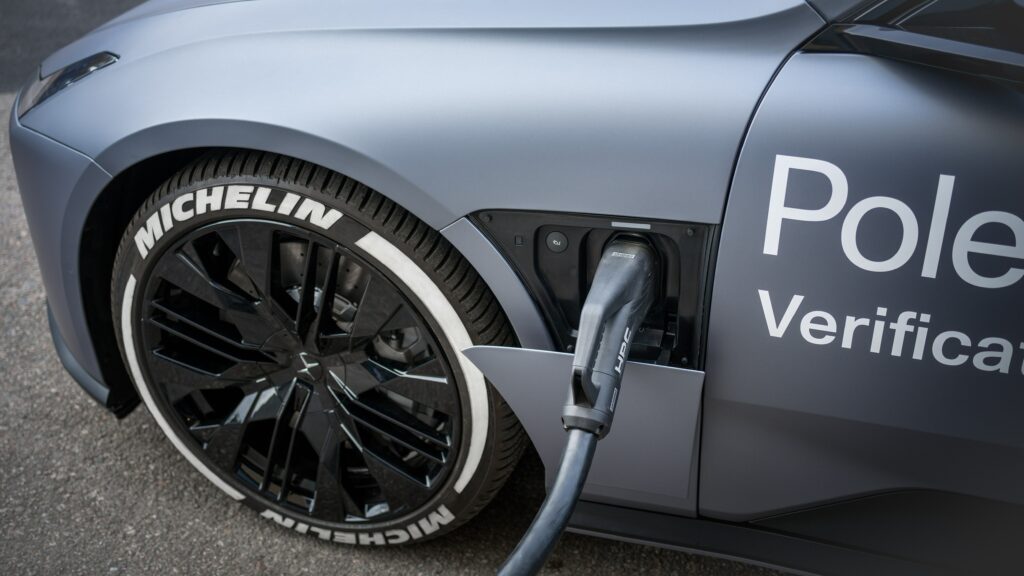
Electric vehicles may be gaining traction, but range anxieties persist. Not for long, if Polestar and StoreDot have their way. The carmaker and battery tech company successfully demonstrated a breakthrough that could reframe our concept of EV charging. A specially adapted Polestar 5 prototype zipped from a 10% to an 80% charge in a mere 10 minutes. This kind of technology means that you won’t be spending all that time charging or waiting for a free charger.
This stunning achievement marks the first time StoreDot’s Extreme Fast Charging, or XFC, battery cells have been tested in a fully drivable car. Traditionally, such tests happen in controlled lab settings, making this a significant step toward real-world adoption of lightning-fast EV charging.
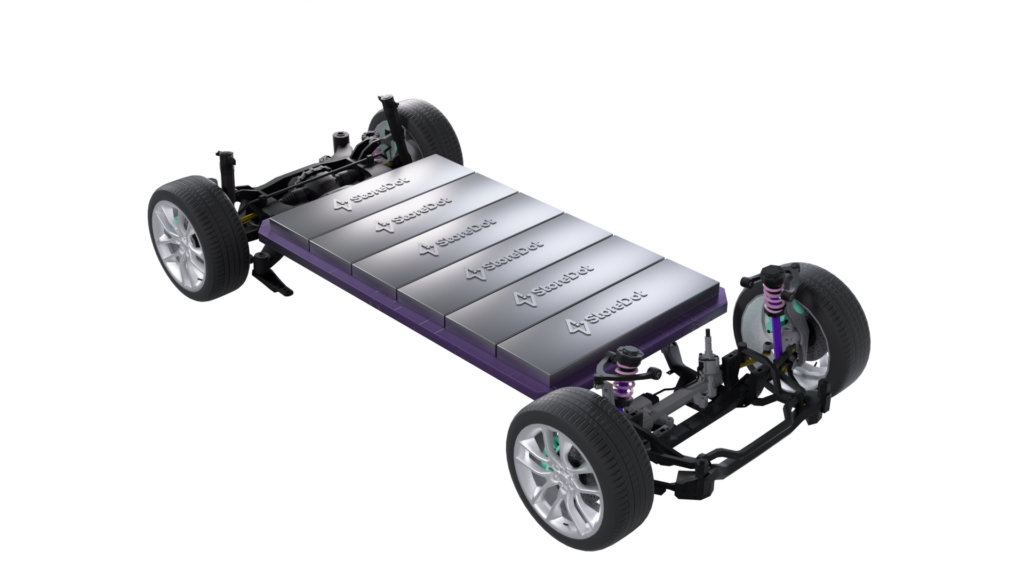
Imagine this for a moment: You’re on a road trip in your Polestar 5. Instead of those typical half-hour charging breaks, you pull over for 10 minutes and add 322 km of range. It’s like stopping for a quick coffee and being ready to hit the road again almost instantly. Better than having to think where to have lunch or sleep while your car is charging.
Addressing Charging Anxiety
“We need to address one of the biggest barriers to EV ownership—charging anxiety,” says Polestar CEO Thomas Ingenlath. He insists that this technology could make EVs as convenient on long hauls as their gasoline-powered counterparts. And honestly, who wouldn’t want that kind of convenience?
StoreDot’s silicon-dominant XFC battery cells offer similar energy density to existing batteries but don’t need fancy cooling systems, saving weight and making EVs even more efficient. Polestar’s 10-minute charge test saw speeds start at 310 kW and peak above 370 kW, proving XFC cells can maintain a high, consistent rate throughout the charging process.
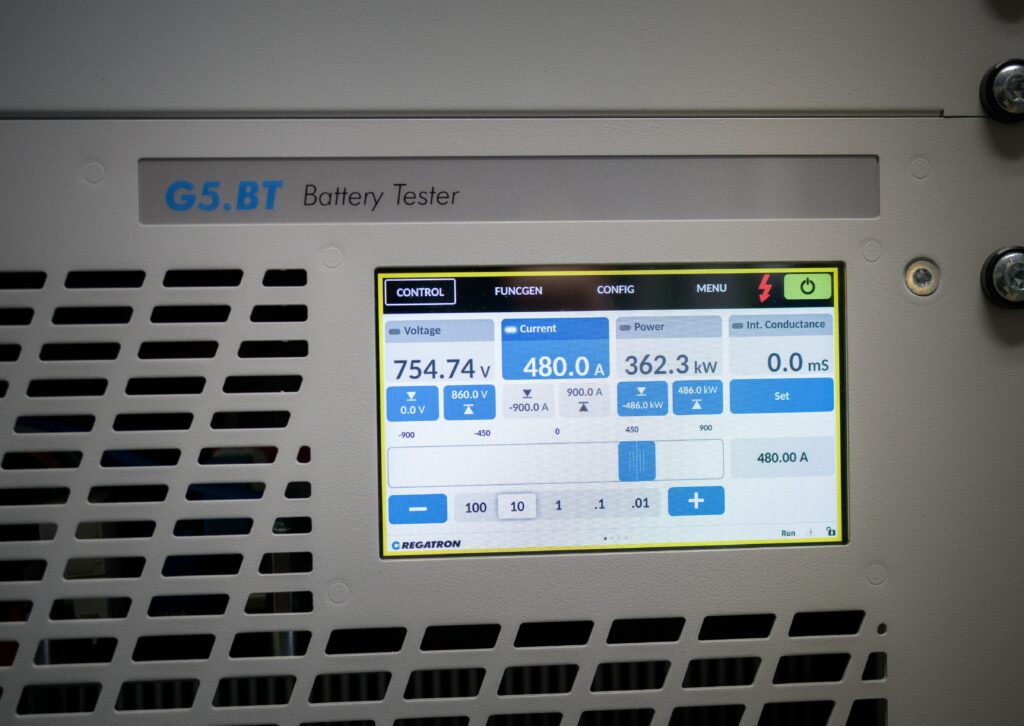
In a remarkable demonstration, StoreDot and Polestar successfully charged a 77kWh battery pack powered by StoreDot’s extremely fast-charging high-energy silicon-dominant battery cells. The demonstration occurred in a fully drivable verification Polestar 5 prototype, a real-world scenario showcasing the technology’s potential and practicality.
The achievement marks a significant advancement in the EV industry, addressing a major barrier to widespread adoption: reduced waiting times. We know EVs take time to charge, something that an EV hater always brings as an argument against going electric. The demo eliminates concerns about lengthy charging times by showcasing unprecedented charging speeds, making EVs more accessible and practical for consumers.
StoreDot’s innovation provides a pathway to sustained advancements in extremely fast charging technology, setting the stage for even more impressive breakthroughs in the future. Imagine a future where charging your EV takes less time than grabbing a quick snack. That’s the kind of game-changer we’re talking about here.
Compatible with Existing Infrastructure
Crucially, this works with existing high-power DC fast chargers, so no costly infrastructure overhaul is needed – and a major boost to consumer convenience. Imagine the impact this could have on EV adoption rates. Faster charging times mean less hassle and more time enjoying the drive.
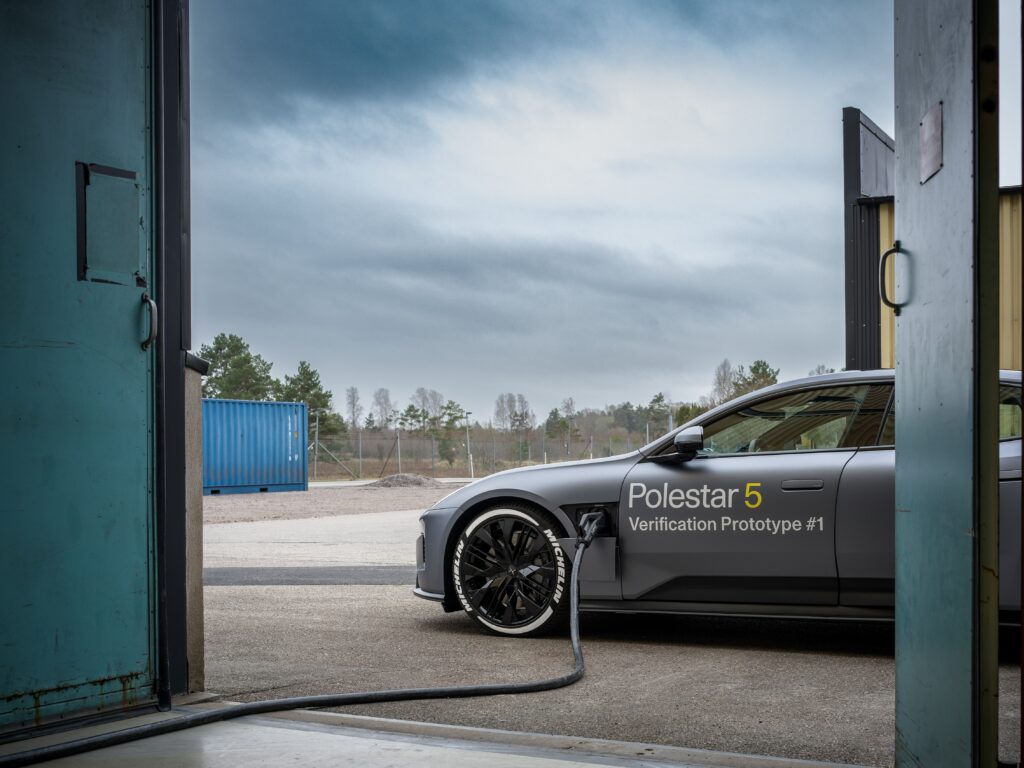
StoreDot’s roadmap aims for 100 miles of range added in 5 minutes by 2024, down to 3 minutes by 2028. At this rate, we’ll reach a point where it’s faster to charge an EV than to fill up a petrol tank. It’s no wonder major players like Volvo, Daimler, and Samsung are backing the company. The potential here is enormous, and it’s not just about convenience. Faster charging could unlock the mass adoption of electric vehicles, which many consider vital in tackling the climate crisis.
But let’s talk about the technology itself for a moment. StoreDot’s silicon-based anode technology is a game-changer. It pushes the boundaries of energy density and charging rates in a way that conventional graphite anodes simply can’t match. This innovation opens up new possibilities for EV performance, making the cars not just faster to charge but potentially more powerful and longer-lasting as well.
Industry Reactions
Dr. Doron Myersdorf, CEO of StoreDot, expressed excitement about the achievement and emphasized its significance: “We are very excited to share this impressive achievement today and are proud to be on this journey with Polestar, a leading car brand that envisions high-performance cars with a sustainable future. We’re happy that our partner is among the first EV car makers to acknowledge that XFC is now a necessary standard to make vast EV adoption a reality. With our extremely fast charging technology, you can add 200 miles in under 10 minutes.”

“This breakthrough revolutionizes the EV ownership experience by eradicating the barrier of range and charging anxiety once and for all. Drivers can now truly travel long distances with the same freedom and convenience as traditional petrol-powered vehicles,” he added.
Thomas Ingenlath, CEO of Polestar, asserts: “By eliminating charging times that were previously an obstacle, StoreDot’s XFC battery cells combined with our cutting-edge product development and battery engineering have unlocked new frontiers for electric mobility. This technology will reshape consumer expectations and accelerate mass EV adoption by making EV ownership a seamless experience for the mass market.”
Future Prospects
Looking ahead, StoreDot remains committed to its product roadmap, aiming to deliver even faster charging capabilities in the coming years. By 2028, the company plans to achieve the milestone of charging 100 miles in just 3 minutes, further enhancing the practicality and convenience of EVs. This is a big step towards convincing your friends that the decision to get an EV is a good one and not a practical nightmare.

With strategic investors and partners, including BP, Daimler, Volvo Cars, and Polestar, StoreDot is driving the future of electric mobility. The successful demonstration underscores the maturity and stability of StoreDot’s XFC technology, paving the way for its commercialization and widespread adoption.
Final Words: Is This a Breakthrough or Just Another Marketing Stunt?
The implications of this technology are profound. Faster charging means less downtime, more convenience, and, ultimately, a more enjoyable driving experience. It’s a win-win situation for consumers and the environment. As the world moves towards a more sustainable future, innovations like these are crucial in making electric vehicles a viable and attractive option for everyone.
In summary, StoreDot and Polestar’s breakthrough in extreme fast charging technology marks a significant step forward in the EV industry. With the ability to charge a vehicle from 10% to 80% in just 10 minutes, the barriers of range and charging anxiety are rapidly dissolving. This technology not only makes EV ownership more practical but also sets the stage for widespread adoption, driving us closer to a greener, more sustainable future. As we look ahead, the possibilities for further advancements in EV technology are endless, and the road ahead looks brighter than ever.
The only thing we’re eager to see is the long-term effect it will have on the batteries and whether it will reduce the longevity.


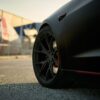
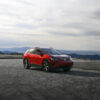

If you want to tackle charging anxiety, what is needed is a reliable charging network, not a fast one. Make sure that all the charging places are on-line, that there is redundancy and that the status is available on line.
Unfortunately car makers (except Tesla) still aren’t getting the memo that they must get their hands dirty and start installing charging stations too.
I am glad you added the qualifier at the end otherwise it would have doynded like a paid commercial. My thought is there seems to be a lit of ” competing breakthroughs” lately. Many looking for R&D income streams which often di not pan out is cost effectiveness to mass produce. Building a handful for testing us not the same as mass production. One factory cannit be easily be adapted in many cases to build an entirely new tech. How does this stack up in power density ” an important ommission”! I am sure the information was available and leaving it out makesthisseem like a little hype. CATL has announced a 500Wh/ kg density on a new battery they claim will be mass priduced within another year. On the surface this sounds like the holy grail allowing electric powered airflight. Density, charging speed and minimal loss of density for frequent fast charging are all essential in the udeal battery. They are often mutually exclusive as the materials/ design that produces one can not support the other. As you say, without any real world extensive, independently verifiable testing, this is all for nothing but getting our hopes again for the ententh time only to be dashed. By the time I swing 55k at a new EV in 3 or 4 years, I hope there is enough data to help me make the right purchase.
Although this sounds inticing, having several cars charging this fast at a station will require enough power to runs a small town. May fast chargers share the 350kw between 2 chargers, so 2 take twice as long. And what is the cycle life of this battery? 1000 is the bare minimum, but many of these so called “newest thing” batteries have a cycle life in the low 100’s making them practically useless. Taking a little longer to charge is just an adoption change that many like me have no problem with. It makes me slow down and start to enjoy the journey as well as the destination. And besides, I make up that little bit of time every week that I don’t have to stop at a gas station.
The only thing I would raise is, does this breakthrough lead to faster battery degradation as with lithium where ideally the battery needs to be given some time to ‘recover’ before being charged ?